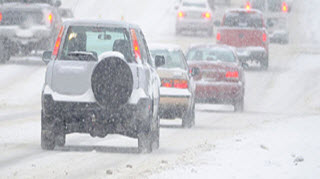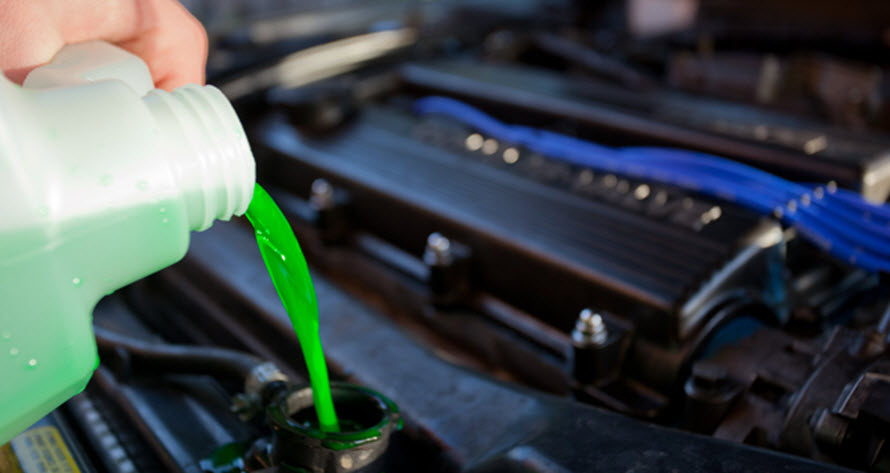Why You Should Double Check Your Car Coolant In Winter?
The secret to your car operating is the internal combustion engine. This piece of machinery is going to generate enormous amounts of heat, enough to cause very serious internal damage if it is not properly controlled. Coolant in the radiator fluid is what controls heat. It sees to it the temperature of the engine does not go dangerously high. Everyone is naturally concerned about coolant in the summer months; no one wants to deal with an overheated radiator. Yet, it is just as important to watch out for the coolant in the winter.
Reason behind coolant check in winter
The reason lies in radiator. It holds the responsibility of keeping  the temperature of the engine where it ought to be. If the temperatures outside plunges below freezing, there is the possibility of fluid in the radiator freezing. It means that the radiator is not able to do anything to affect the overall temperature. Without this control, the engine is going to overheat and create extensive damage. The safety hazard is extreme. The US Department of Transportation has noted it is the failure of the coolant system which is the primary reason for the breakdowns which will occur on the highway. There are several ways to check on the condition of the coolant in your car.
the temperature of the engine where it ought to be. If the temperatures outside plunges below freezing, there is the possibility of fluid in the radiator freezing. It means that the radiator is not able to do anything to affect the overall temperature. Without this control, the engine is going to overheat and create extensive damage. The safety hazard is extreme. The US Department of Transportation has noted it is the failure of the coolant system which is the primary reason for the breakdowns which will occur on the highway. There are several ways to check on the condition of the coolant in your car.
Ways to check coolant condition
The first place to look is on the dashboard of your car. It has a temperature gauge, and if the needle goes into the red there is a risk of overheating. If the needle is at the halfway point or just below it, everything is doing fine. You can open up the hood to check on the radiator by observing the overflow compartment of the radiator. It is pretty straightforward: the compartment has a full line and also an add line. The level of the coolant ought to be between those two lines. If you’re going to inspect the fluid inside the radiator visually, wait until the engine is cooled down before you remove the radiator cap. This is critical, because radiator fluid is under considerable pressure. When the car is hot, you risk getting a serious burn.
Choose coolant based on car model
Radiator fluid color should not be clear. Depending on the type of radiator fluid in use, the color ought to be green, red, orange, or blue. The green variety will last two years, and the red or orange is going to be able to last as much as five years. You will have to have the radiator flushed if you are going to go to the longer-term variety. You have to be careful to be sure that the coolant in the radiator is what your car model ought to have. This can easily be determined by taking a look at the owner’s manual. The ordinary coolant water ratio in the radiator is 50/50, but that has to be changed in the wintertime. You need to have a 60/40 ratio in the cold months with 60 being the coolant.
Why flushing is a good idea?
Even if you are not changing the variety of coolant, flushing is a good idea. It can remove any contaminant that may have entered into the radiator. A primary example of contaminant being inadvertently added is the use of tap water. Car owners don’t always understand that tap water contains minerals and calcium which will form deposits in the radiator. Distilled water is what ought to be added. Pressure testing the coolant system is an excellent way to identify any leaks that may be in the radiator. The last thing you need to have happened in the winter for a leak is to drain out needed fluid.
This is a do-it-yourself project but here’s an idea for you. If you’re going to have your oil changed, take the opportunity to have the coolant investigated. Many service centers will add coolant at no additional cost. If you have the car in the shop anyway, a little extra precaution by having the coolant checked is a wise move in the cold months. Incidentally, if you live in an area that is warm, you still have an obligation to watch that coolant. Even though the weather is not scorching hot, the coolant still has to be maintained. It is simply a matter of due diligence to have the fluid checked, particularly if the needle on the temperature gauge is starting to move closer to the red zone.




